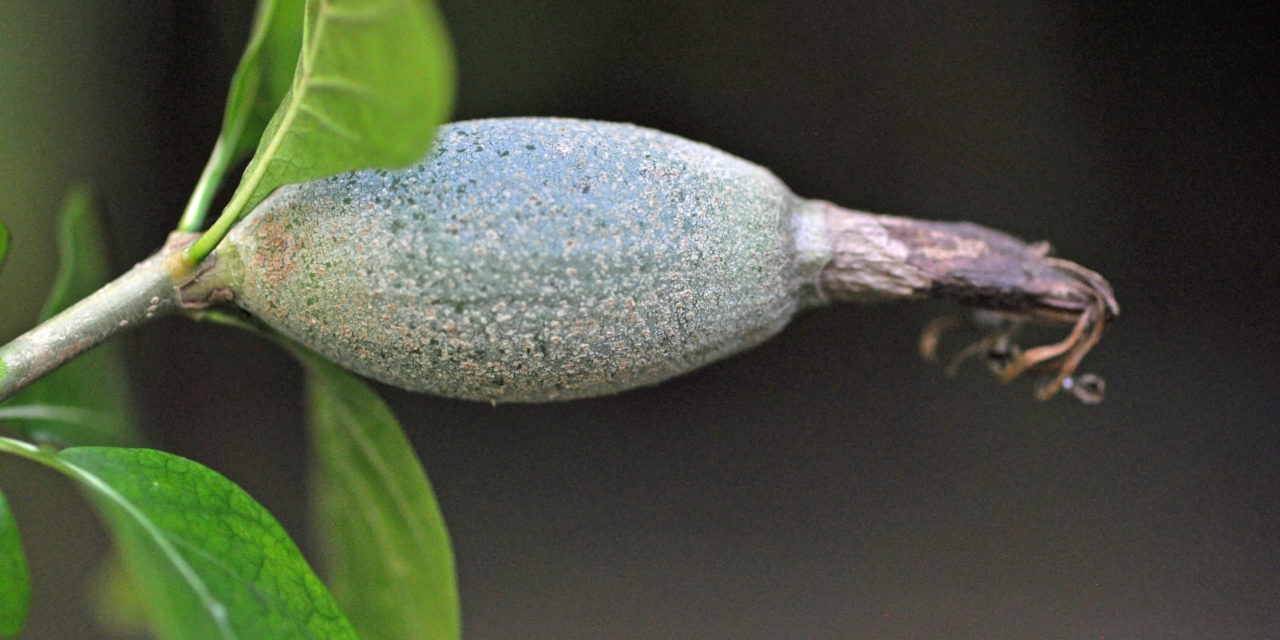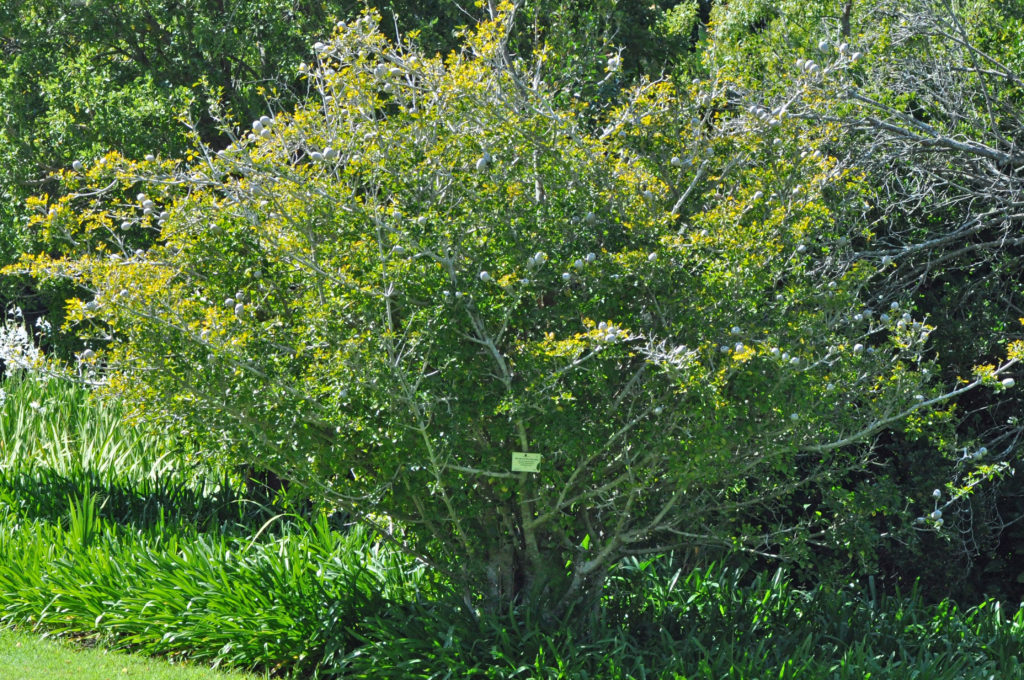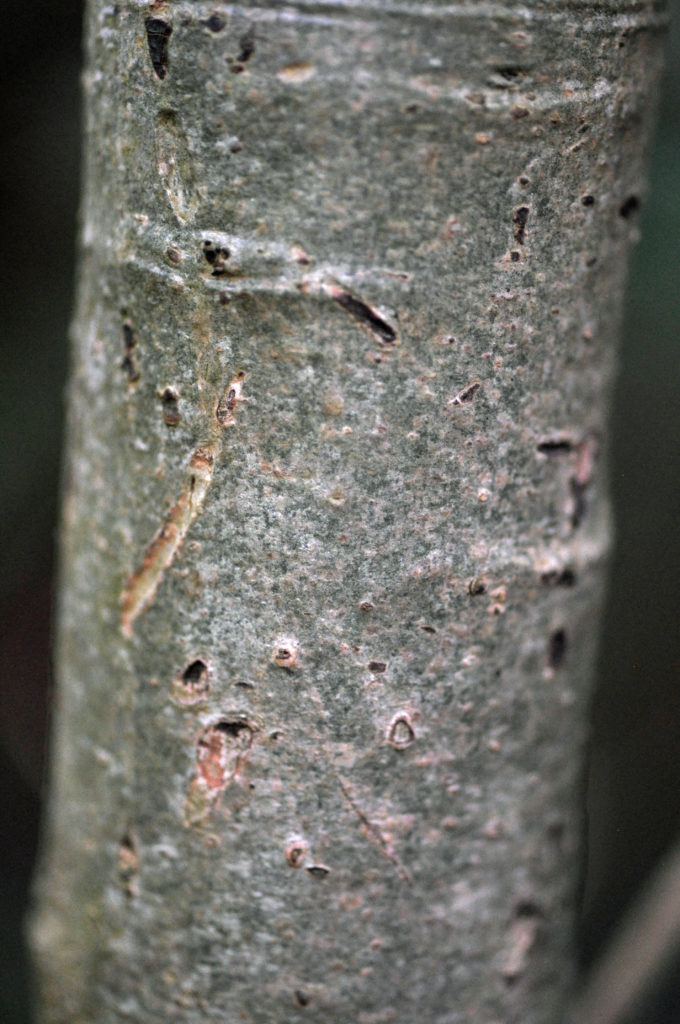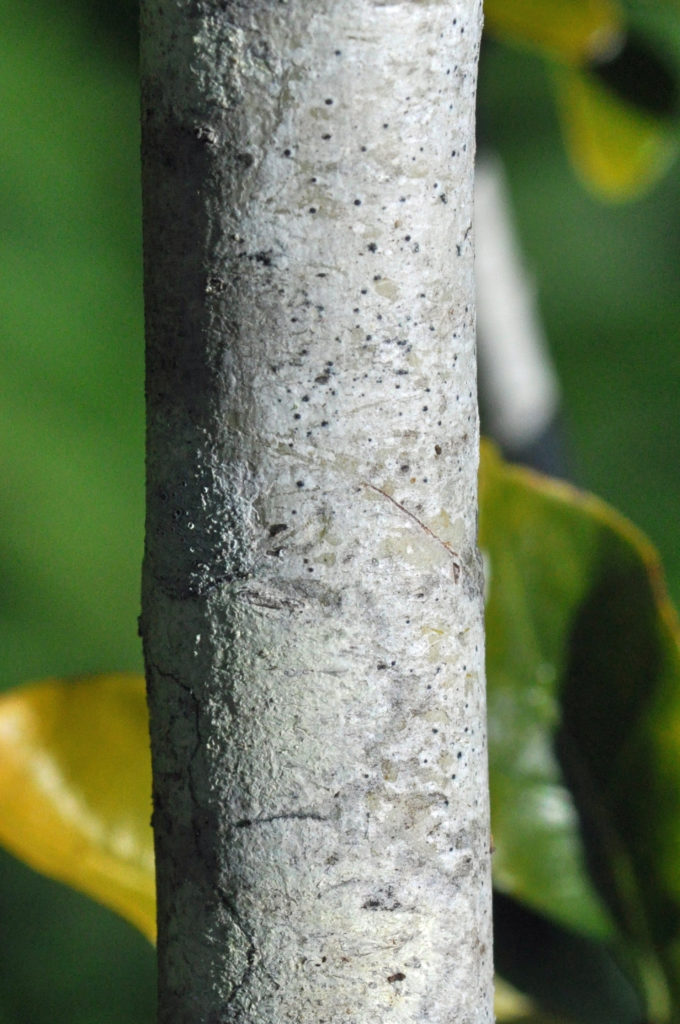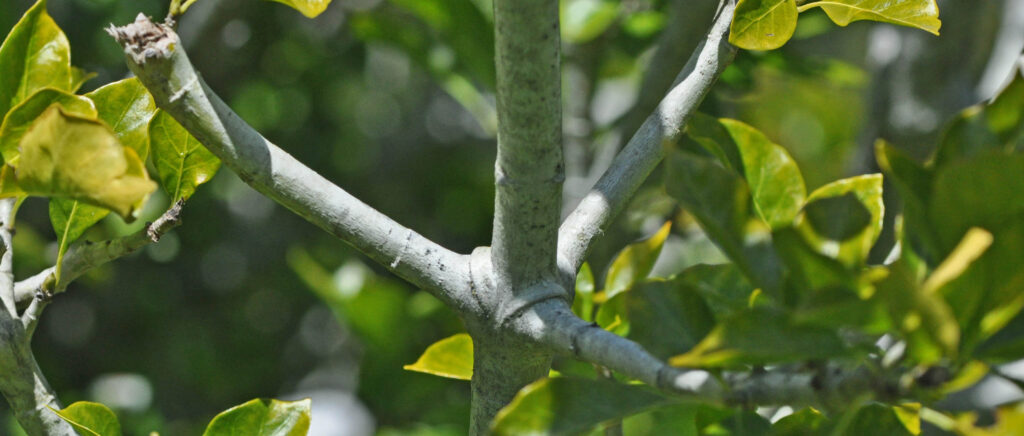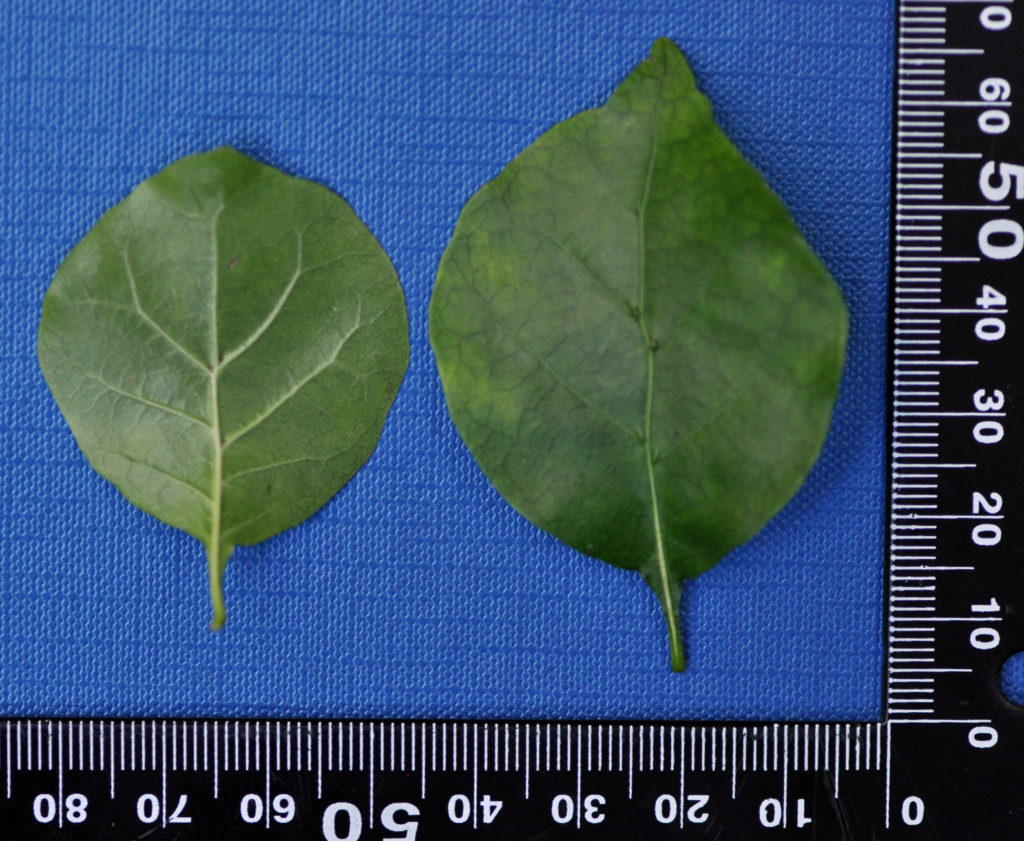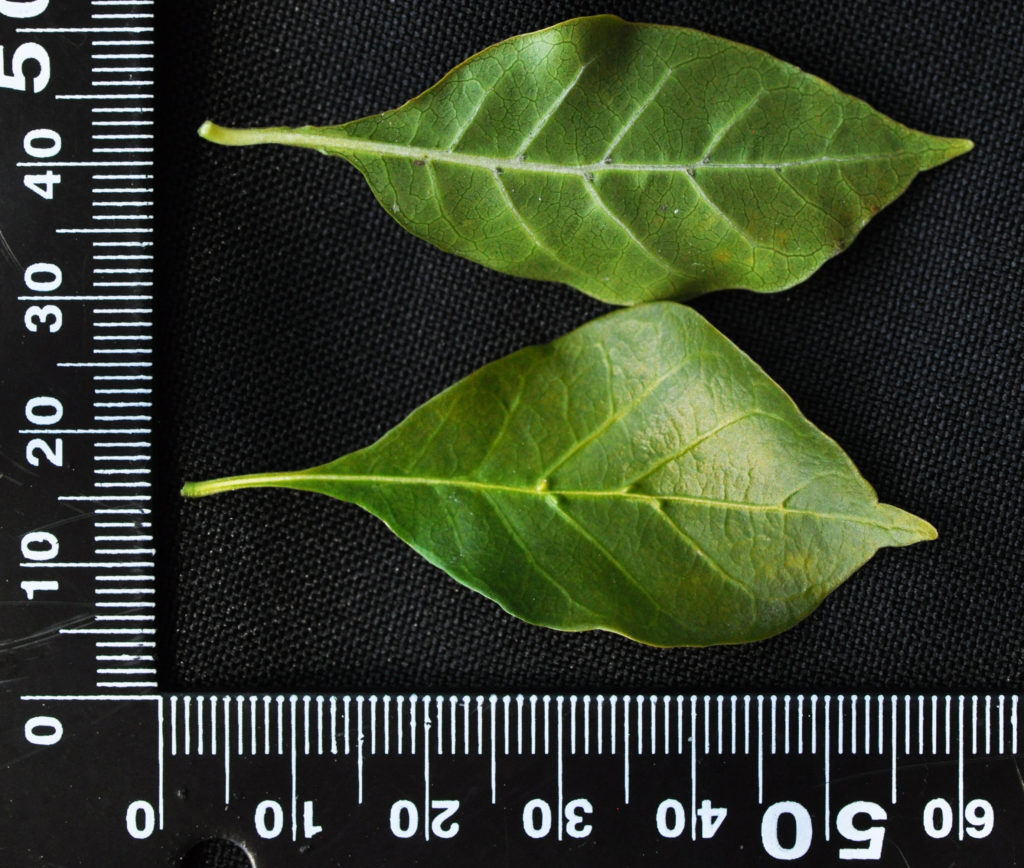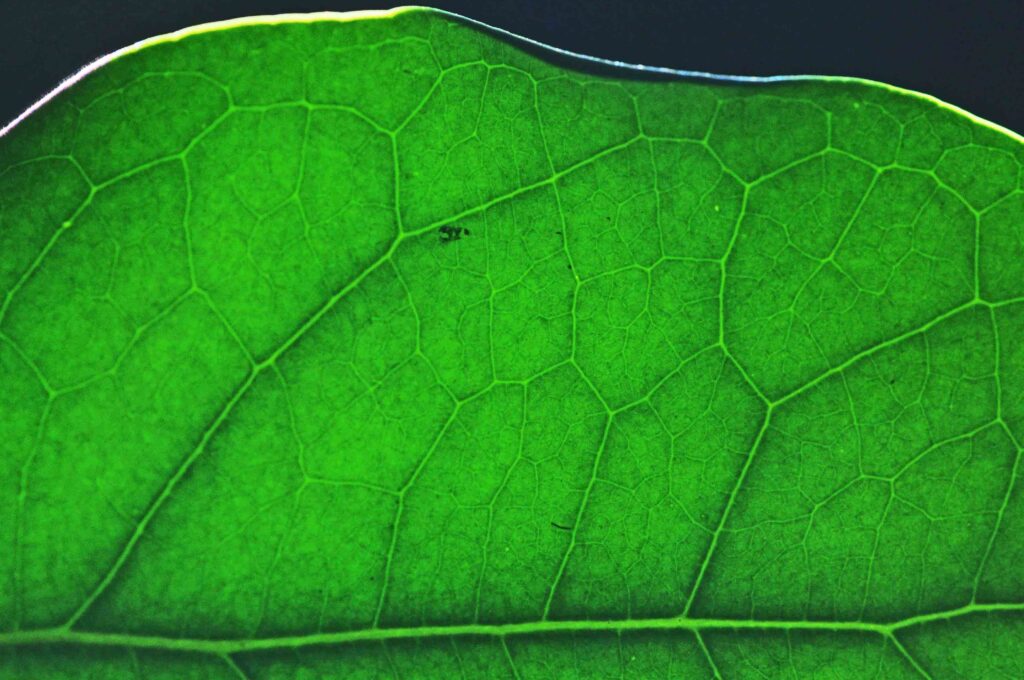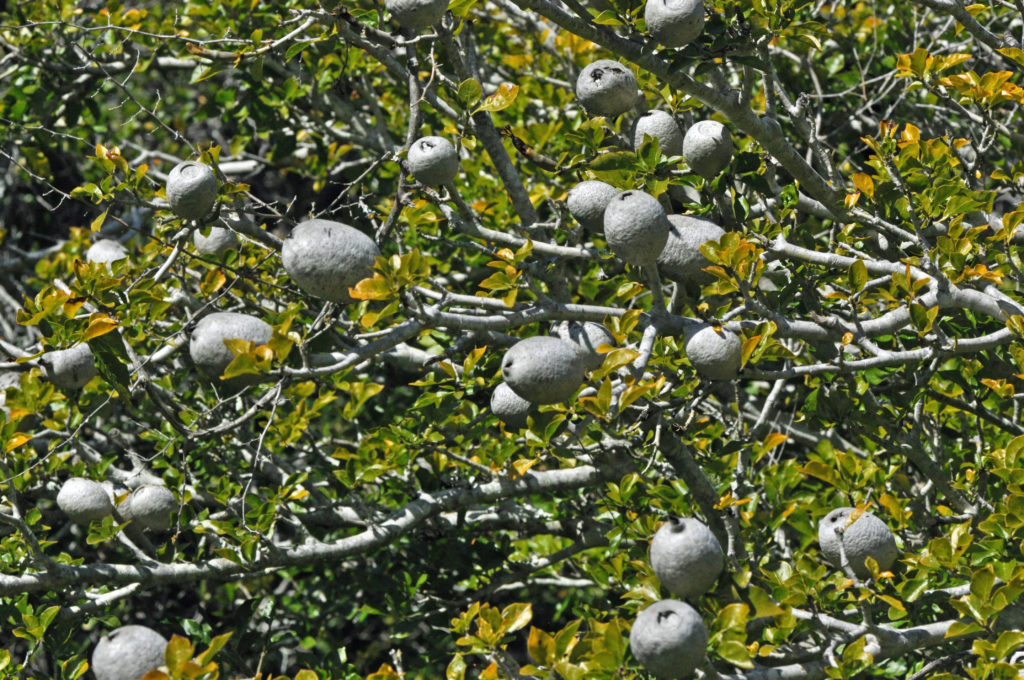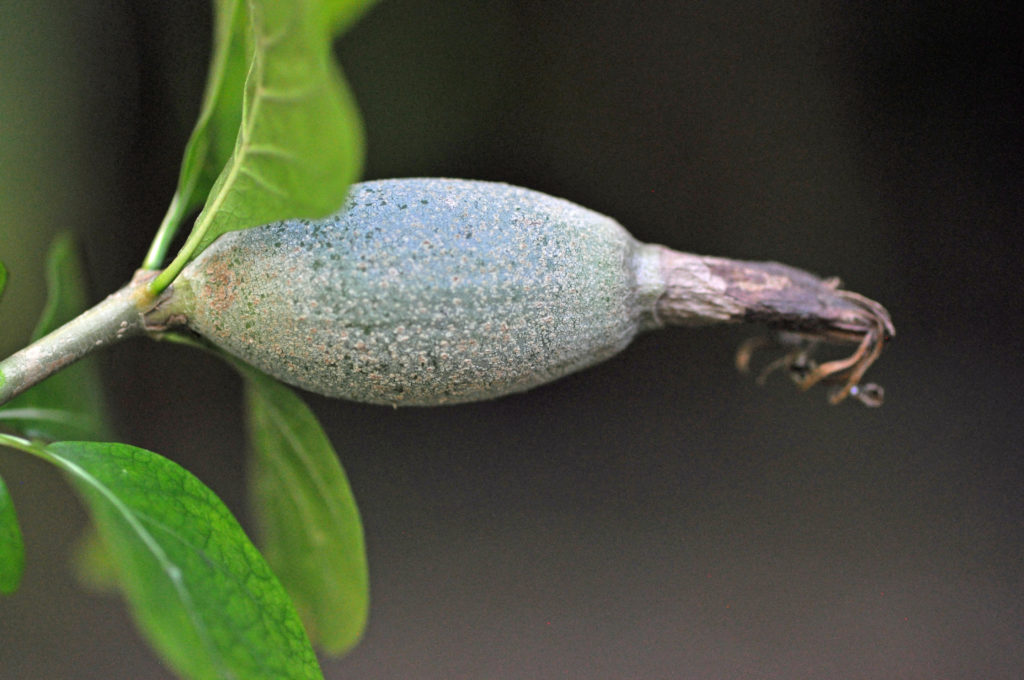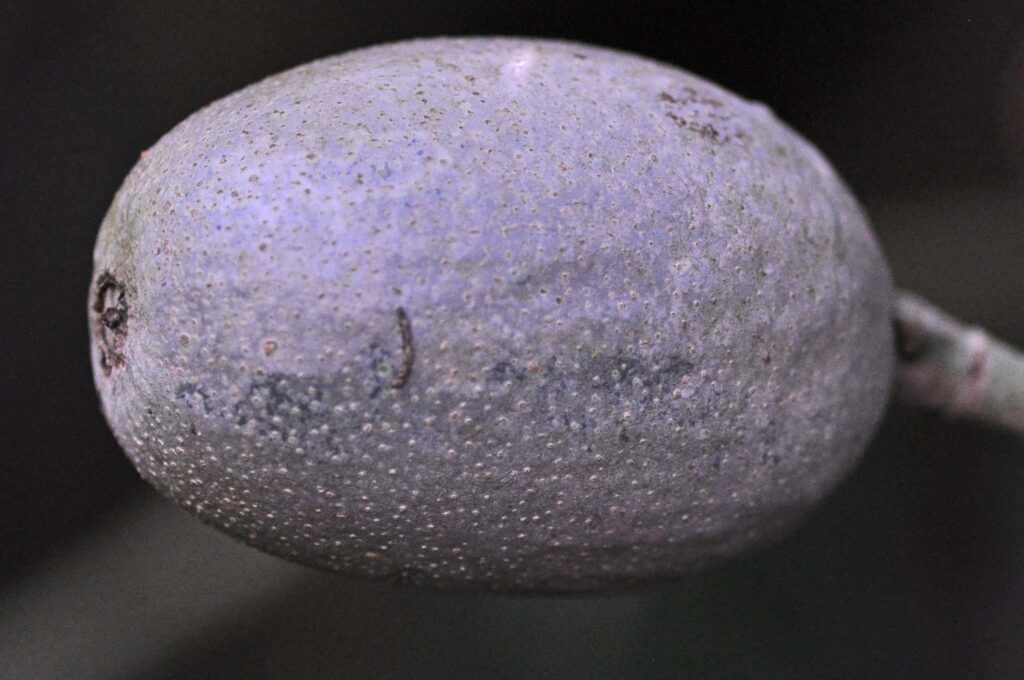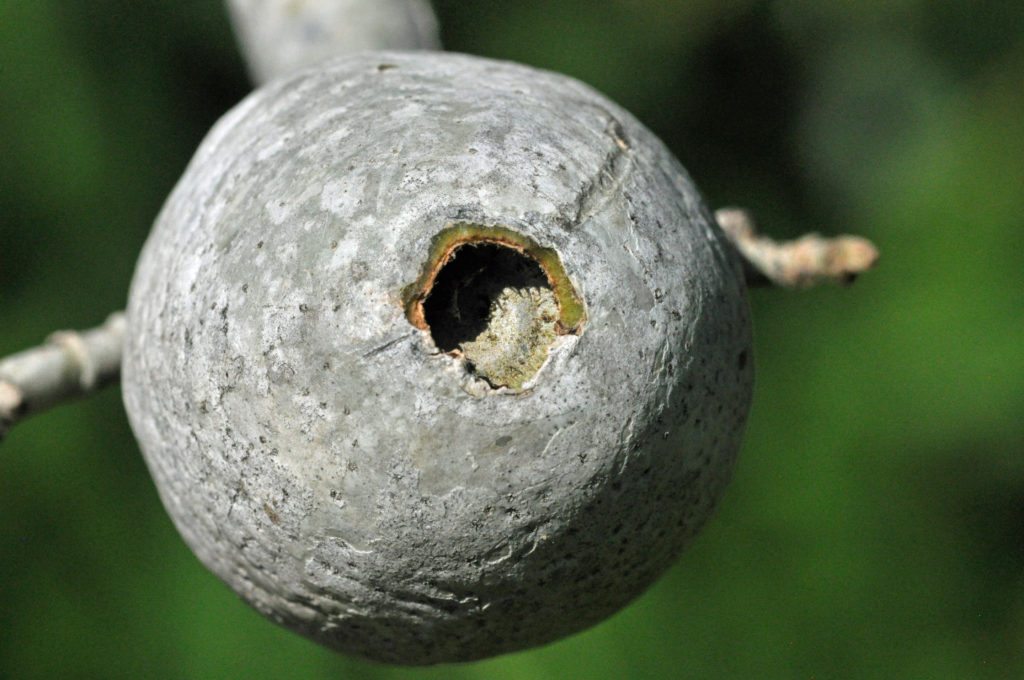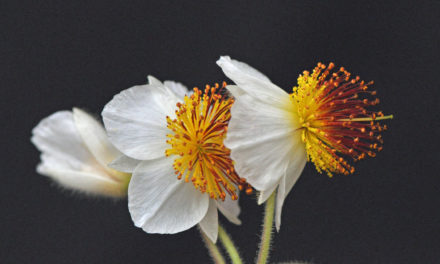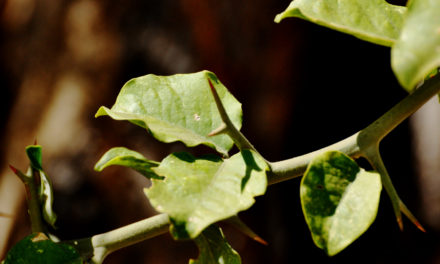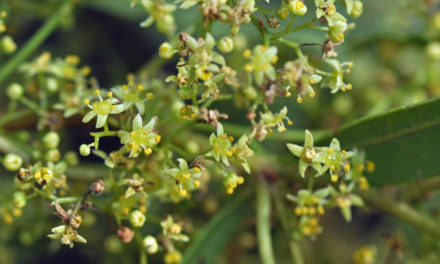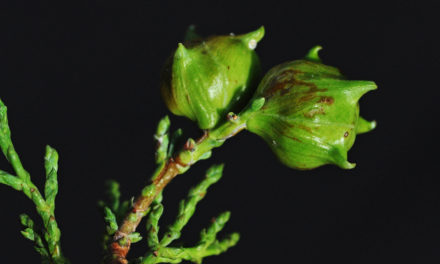General Info – summary
This strikingly decorative unarmed Tree with branches in 3’s and smooth bark may reach 5+m high. The various shaped, soft and glossy Leaves are simple with decurrent bases. The creamy-white, sweet-scented, bisexual Flowers are large, regular and solitary. 8 stamens and a single pistil with an inferior ovary are present. The large, indehiscent Fruit is ovate & lacks ribs. Many hard seeds develop in a fibrous covering.
Description
Gardenia thunbergia
Previous name: Gardenia verticillate.
SA Tree No. 692.
Common names: (Afr) Boskatjiepiering, Buffelsbal (buffalo testicle – referring to the appearance of the fruit), Stomp-dooring Wildekatjiepiering, Witkatjiepiering. (Eng) Cape Jessamine, Forest Gardenia, White Gardenia, Wild Gardenia. (isiXhosa) Umkangazi, Umkancaza, Umkangana, Isisende. (isiZulu) Umkhangazo, Umkhwakhwane, Umvalasangweni, Umvalasangwane (back-gate closer – for cattle kraals), Umvalasangweni-wehlathi. (siSwati) Umvalasangweni.
Family: Rubiaceae (Coffee family). This family of dicotyledonous plants has in excess of 600 genera and about 13 000 species and members include trees, shrubs and herbs including climbers. Local genera with trees on this website include Afrocanthium, Canthium, Coddia, Gardenia, Pavetta, Rothmannia and Vangueria. Leaves are simple, opposite or whorled and have interpetiolar stipules that may be reduced or fused to form a sheath. Flowers are bisexual or unisexual. The calyx has sepals that are at least partly united. Petals are joined – at least at the base. Blue butterflies in the family Lycaenidae are involved in pollination. Stamens are usually as many, as and alternating with corolla lobes. The Ovary is inferior. Fruit is a drupe, berry or capsule. In this family, there are 228 South African species.
Name derivation: Gardenia – named after Alexander Garden, a Scottish doctor, physician and plant collector (1730 – 1791). thunbergia – named after C.P. Thunberg (1743-1828) a Swedish naturalist and a student of Linnaeus who collected mainly plant specimens in South Africa from 1772-1775. He then moved to collect more specimens in Japan. After returning home, he completed his Flora Capensis in 1813. This was a reference work in Latin on the South African flora. The striking and decorative Gardenia thunbergia was the first gardenia known to botanists. In warm countries worldwide, there are over 200 species of the genus Gardenia.
Conservation: National Status: L C (Least concern). Assessment date: 2005. (J.E. Victor and A.E. van Wyk).
Tree
This shrub or small, unarmed, long surviving Tree (photo 400) with its angular crown is usually up to 5m but may reach 7m high. The straight Trunk has a diameter reaching 25 to 40cm. Bark is whitish to pale grey and smooth (photos 346 & 396). The pale, almost equally spaced three Branches are short, rigid and emerge from the stem at almost 90 degrees (photo 395).
- 400. 2018/09/16. Kirstenbosch NBG. Photo: David Becking.
- 346. 2018/09/16. Kirstenbosch NBG. Photo: David Becking.
- 396. 2018/09/11. Kirstenbosch NBG. Photo: David Becking.
- 395. 2018/09/16. Kirstenbosch NBG. Photo: David Becking.
Leaves
This evergreen tree has smooth, soft, thinly leathery and glossy Leaves that are simple (have a single blade that may have incisions that are not deep enough to divide the leaf into leaflets). They usually occur in groups of 3 around the nodes. Occasionally 4 leaves occur. Leaves occur near the ends of short lateral branchlets. Each leaf is up to 15 x 10cm (photos 450 & 350). They are hairless and have a variable shape – including elliptic (oval in outline, with narrowed to rounded ends and widest near the middle), and obovate (egg-shaped – with the narrower end at the base). The Margin is wavy and entire (not in any way indented). The Apex ranges between being rounded and gradually tapering. The Base tapers and is decurrent (leaf blades that partly wrap or have wings around the stem or Petiole (leaf stalk) – photo 401). The petiole is up to 2,5cm long. The Blade is glossy dark green on both sides and the Midrib and lateral Veins are conspicuous – especially below (photo 350). Protruding side veins and smaller veins are visible when the leaf is examined against a strong light (photo 352) – here a hand lens will help. Hairy Domatia (occur in axils of principal side veins. To the naked eye, the domatia appear as small bumps. They are intended to be used by organisms that have a symbiotic relationship with the plant – photo 401).
- 350. 2018/09/11. Kirstenbosch NBG. Photo: David Becking.
- 401. 2018/09/16. Kirstenbosch NBG. Photo: David Becking.
- 352. 2018/09/11. Kirstenbosch NBG. Photo: David Becking.
Flowers
The large, solitary, white Flowers develop in large numbers in leaf axils at the ends of twigs. Unlike those in Gardenia cornuta, the flowers fade to cream but do not turn yellow. The flowers are up to 7cm wide and long. They are heavily and sweetly scented – especially at night. The Calyx has Sepals that form a tube, which is cleft at one side and has a cluster of small leafy outgrowths. In the Corolla, the base of the Petals forms a white tube, which is up to 7 cm long. This extends into 8 lobes with rounded ends. These lobed extensions move out at right angles to the tube. 8 Anthers are present which alternate with the petals and are epipetalous (born or arising from the petals). A single Pistil (a unit of the gynoecium, the female element of the flower, composed of the Ovary, Style and Stigma) is present and the inferior Ovary has a single Style emerging from it. Pedicels (flower stalks) are usually absent. (Oct-Mar).
Fruit
Large numbers of fruit may be produced (photo 399). The shiny, woody fruit is Ovate (egg shaped), lacks ribs and is usually up to 9 x 5cm. It is initially green and hard on the outside with raised white spots (photo 348) which are Lenticels (a usually raised corky oval or elongated areas on the plant that allow the uncontrolled interchange of gases with the environment – photo 345). The fruit is very fibrous inside. This plant cannot disperse its own seeds and, unless eaten e.g., by elephants or picked. Thus, the indehiscent Fruit may remain on the tree for much longer than 1 year (photo 398). Fruit is pale greyish green – unlike in G. cornuta where they are bright yellow. The fruit initially ends with a partially persistent Calyx (photo 348) that is tubular with rounded lobes. Many Seeds are contained within the heavily fibrous interior. (Nov-May mainly, but all year).
- 399. 2018/09/16. Kirstenbosch NBG. Photo: David Becking.
- 348. 2018/09/11. Kirstenbosch NBG. Photo: David Becking.
- 345. 2018/09/11 Kirstenbosch NBG. Photo: David Becking.
- 398. 2018/09/16. Kirstenbosch NBG. Photo: David Becking.
Distribution & Ecology
This primarily forest and coastal to midland thicket plant is Endemic (Endemism is the ecological state of a species being unique to a defined geographic location) in southern Africa. Trees are located along the east coast in evergreen forests, forest margins as well in the bushveld (a sub-tropical woodland ecoregion of southern Africa). The plant can withstand some frost but is not very drought resistant. It is found from the Eastern Cape, from Northeast of Port Elizabeth, to Kosi Bay, KwaZulu-Natal, southern Mozambique and eastern Eswatini (Swaziland). Moths aid pollination. Nectar is produced at the bottom of the tube and can only be reached by insects with long proboscis – like some moths. The flower has a thickish calyx that makes it difficult for other insects to dig through to reach the nectar. Rhino, elephants, buffalo and large antelopes like Kudu and Nyala, consume the Fruit. The hard seeds can withstand passing through their intestine – resulting in dispersal. The strongly night scented flowers attract the transparent black winged Coffee Bee Hawkmoth (Cephonodes hylas), that feed on the Leaves of some Rubiaceae family members including this tree. The Sap is consumed by the Twig Wilters Insect (Carlisis wahlbergi). These insect may withdraw so much liquid that the young stem may wilt. They are mainly attracted to the sap of Gardenia thunbergia and Gardenia volkensii.
Ethnobotany
The tree is very slow growing. The Wood is very dense. It is yellowish, and even though it is very hard, it able to be bent without breaking. The wood is used for making buttons, implement handles, tools and small items. It is too small for much other use. Propagation is from seeds or truncheons (stem cutting from a selected plant – used to produce genetically identically new plants). It can be grown as a small hedge. Removing the Seeds from the very hard fruit is difficult and planting should occur soon after harvesting. Occasional reports have indicated that the fruit is poisonous. Local medicine makes use of the roots and leaves. This plant bloomed after being introduced into Kew in 1773.
References
Boon, R. 2010. Pooley’s Trees of eastern South Africa. Flora and Fauna Publications Trust, Durban.
Coates Palgrave, M. 2002. Keith Coates Palgrave Trees of Southern Africa, edn 3. Struik, Cape Town.
Lawrence, G. H. M, 1951. Taxonomy of Vascular Plants, The Macmillan Company, New York. Tenth Printing 1965.
Palmer, E. & Pitman, N. 1972. Trees of southern Africa, Balkema, Amsterdam, Cape Town.
van Wyk, B. & van Wyk, P. 1997 Field guide to Trees of Southern Africa, Struik, Cape Town.
Victor, J.E. & van Wyk, A.E. 2005. Gardenia thunbergia L.f. National Assessment: Red List of South African Plants version 2020.1. Accessed on 2023/06/28.
http://www.plantzafrica.com/plantefg/gardenthun.htm
https://en.wikipedia.org/wiki/Gardenia_thunbergia
http://www.kew.org/science-conservation/plants-fungi/gardenia-thunbergia-white-gardenia
https://en.wikipedia.org/wiki/Rubiaceae
https://en.wikipedia.org/wiki/Carl_Peter_Thunberg
https://en.wikipedia.org/wiki/Cephonodes_hylas
https://en.wikipedia.org/wiki/Rubiaceaehttps://breedingbutterflies.com/cephonodes-hylas-coffeebean-hawkmoth/

